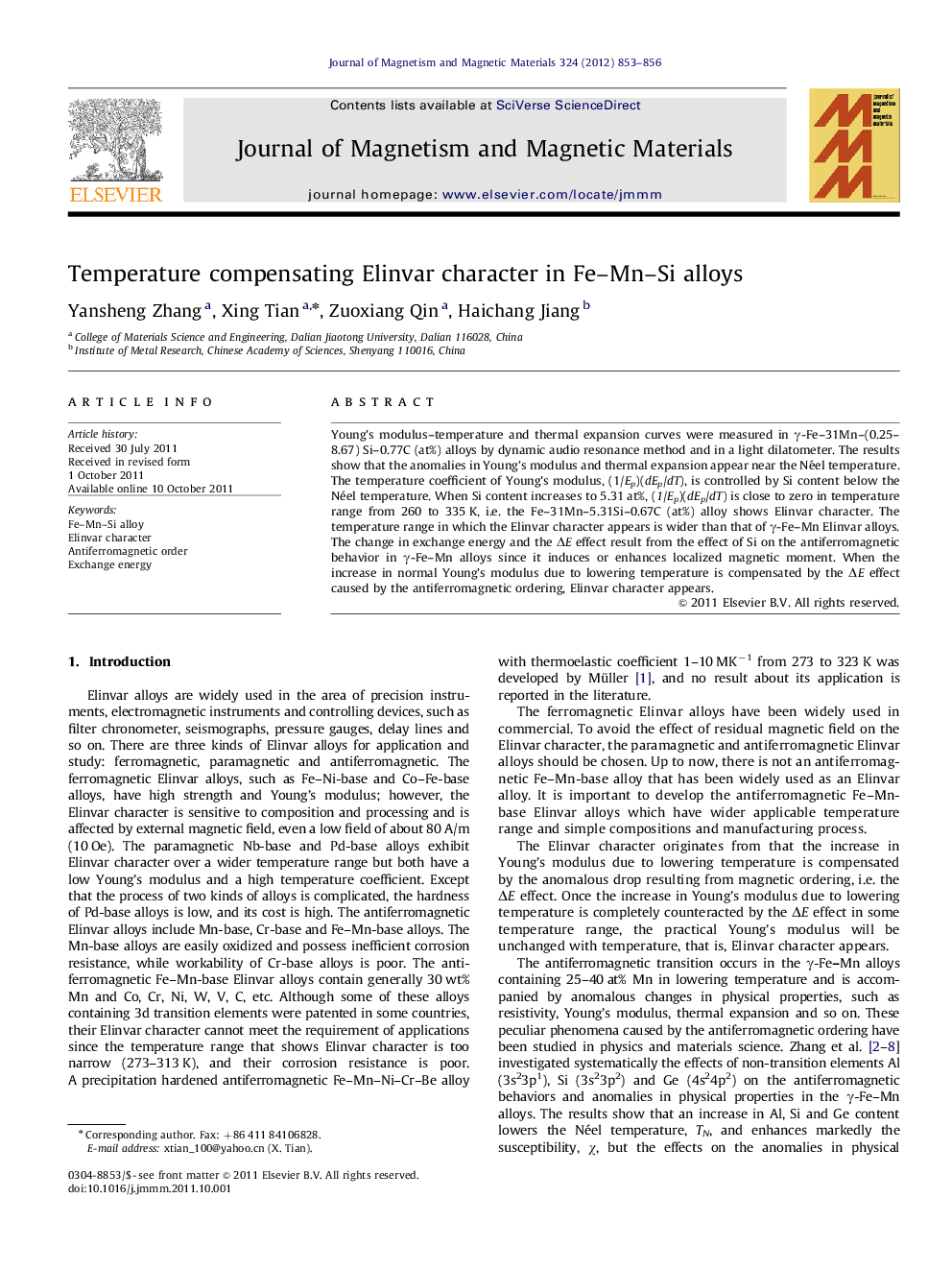| Article ID | Journal | Published Year | Pages | File Type |
|---|---|---|---|---|
| 1800236 | Journal of Magnetism and Magnetic Materials | 2012 | 4 Pages |
Young's modulus–temperature and thermal expansion curves were measured in γ-Fe–31Mn–(0.25–8.67) Si–0.77C (at%) alloys by dynamic audio resonance method and in a light dilatometer. The results show that the anomalies in Young's modulus and thermal expansion appear near the Néel temperature. The temperature coefficient of Young's modulus, (1/Ep)(dEp/dT), is controlled by Si content below the Néel temperature. When Si content increases to 5.31 at%, (1/Ep)(dEp/dT) is close to zero in temperature range from 260 to 335 K, i.e. the Fe–31Mn–5.31Si–0.67C (at%) alloy shows Elinvar character. The temperature range in which the Elinvar character appears is wider than that of γ-Fe–Mn Elinvar alloys. The change in exchange energy and the ΔE effect result from the effect of Si on the antiferromagnetic behavior in γ-Fe–Mn alloys since it induces or enhances localized magnetic moment. When the increase in normal Young's modulus due to lowering temperature is compensated by the ΔE effect caused by the antiferromagnetic ordering, Elinvar character appears.
▸ The magnetic behaviors and anomalies in properties are studied in Fe–Mn–Si alloys. ▸ The elastic modulus–temperature curves of γ-Fe–31Mn–xSi–0.77C alloys are measured. ▸ The Fe–31Mn–5.31Si–0.67C alloy shows Elinvar character between 260 and 335 K. ▸ The Elinvar character originates from the antiferromagnetic ordering. ▸ This alloy has the simple composition and process and is applicable in practice.
